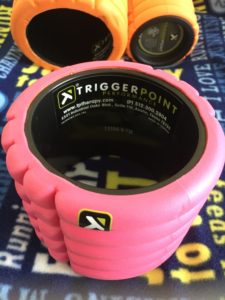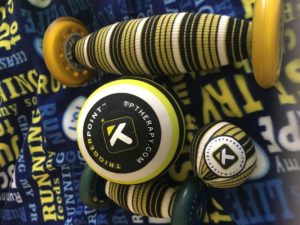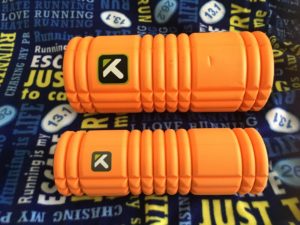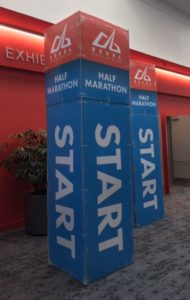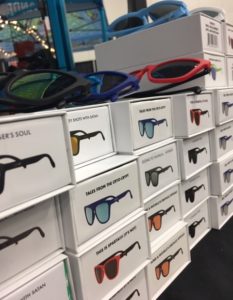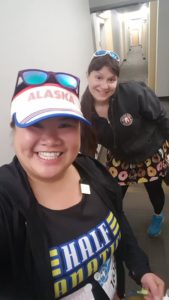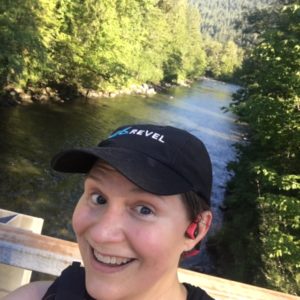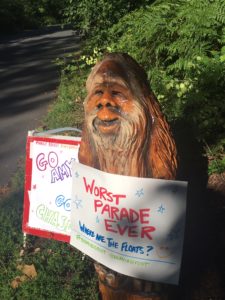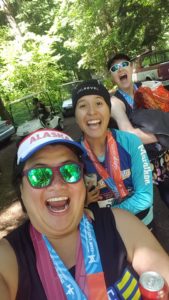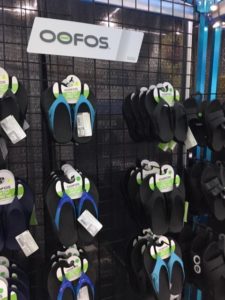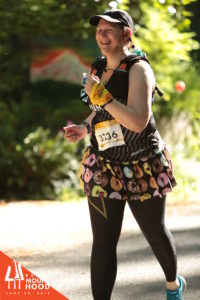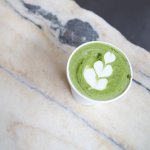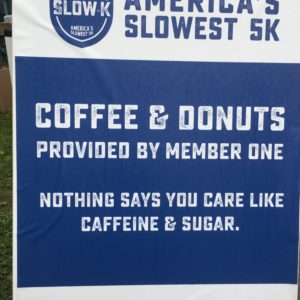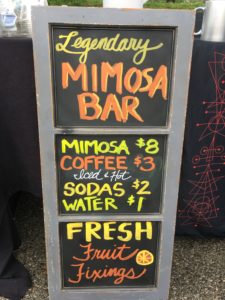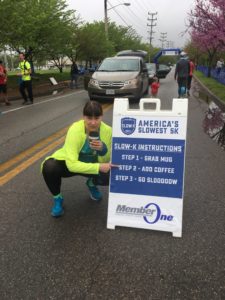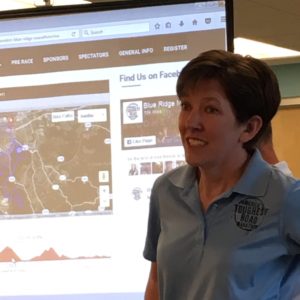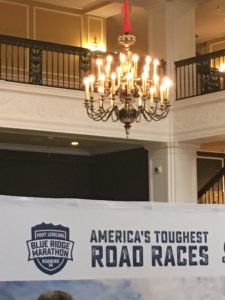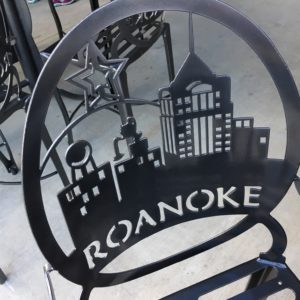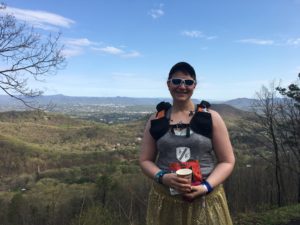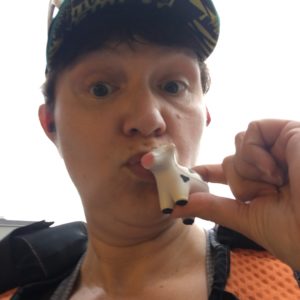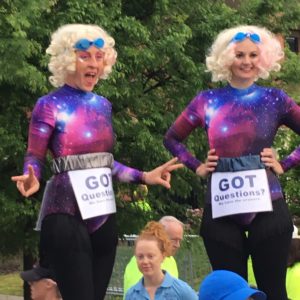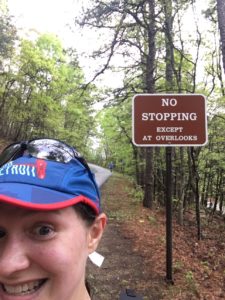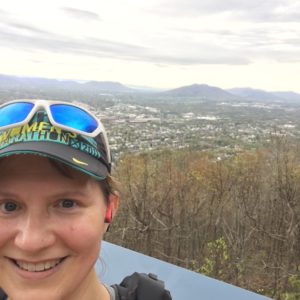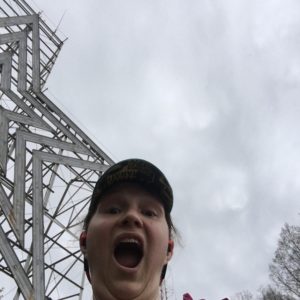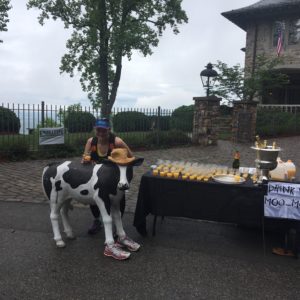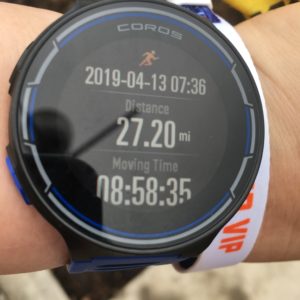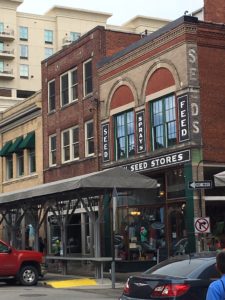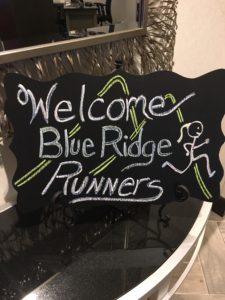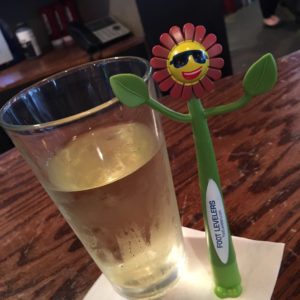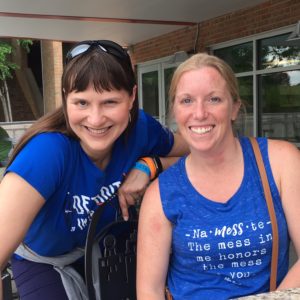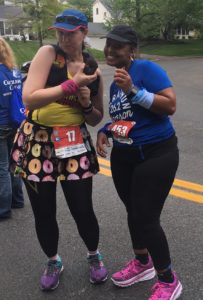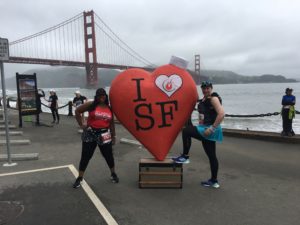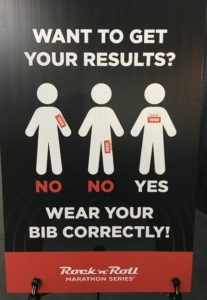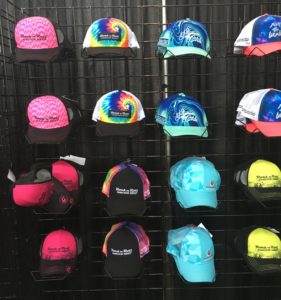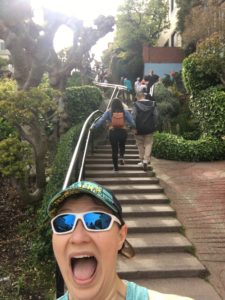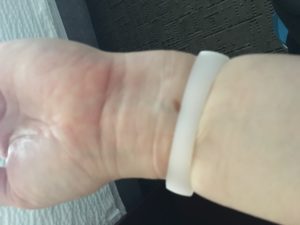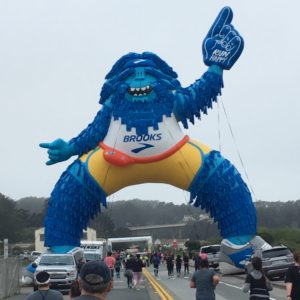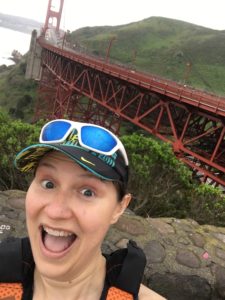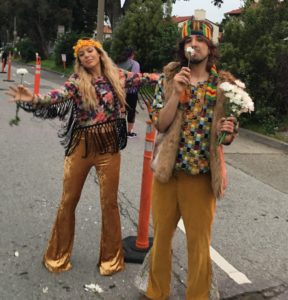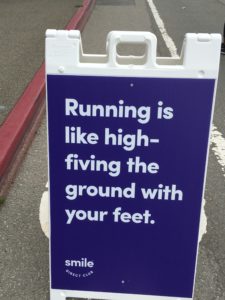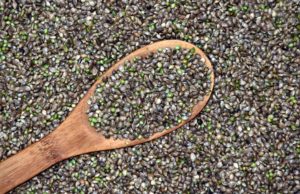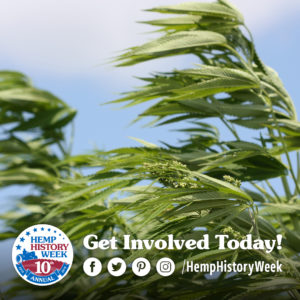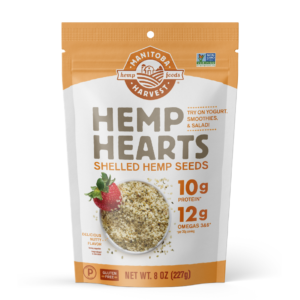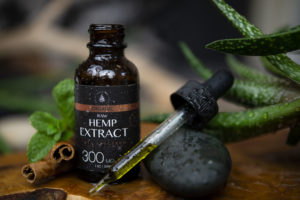Disclosure: I was a member of the 2016, 2017, and 2018 Rock ‘n’ Blog teams. As a member of the team, I received complimentary entries to Rock ‘n’ Roll races, including Rock ‘n’ Roll Seattle (and other perks). This post is not sponsored, edited, or written (in any way) by the Rock ‘n’ Roll series or Competitor Group (or its new owner, Ironman, or Ironman’s former owner, Wanda Sports Company, or current owner Advance Publications, Inc.). All opinions are my own.
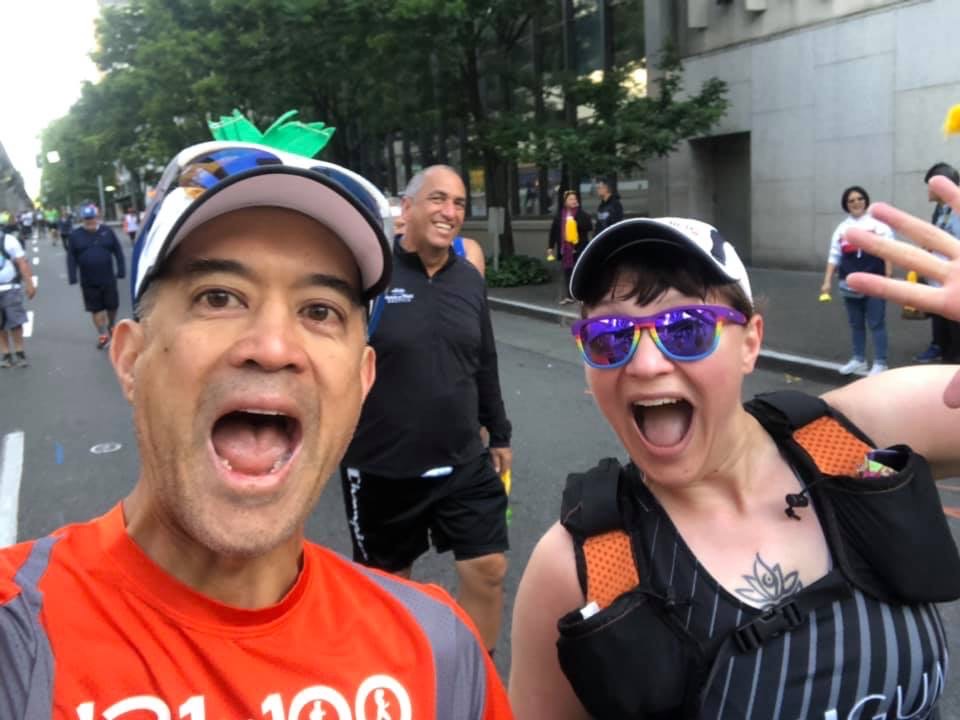
I started this post in 2018, long long long before COVID-19 decimated the 2020 racing season. No joke. I was unable to bring myself to finish it since I found the race pretty disappointing (based on what was promised v. what was delivered) and I felt guilty posting another not-so-glowing review of a series I was supposed to be representing. I tried to pick it up again after Rock ‘n’ Roll Seattle 2019, but felt like a Negative Nellie. There’s nothing wrong with the race, it’s just…I’m feeling kinda meh about the whole thing. So I poked and prodded this review for quite some time, which is why you’re now reading a fall review of a spring race. Apologies in advance, but you know I’ve gotta keep it real.
Which Year Is It?
I’ve run the Rock ‘n’ Roll Seattle Half Marathon since 2015. (Check out my 2015 review!) That was the year I first met Mat Miles Medals (at Rock ‘n’ Roll Arizona) and I had only recently met (at Rock ‘n’ Roll San Francisco) SmartWatermelon. I stayed at the nearby Hotel Pineapple, rented a car, and had dinner with the Seattle office of the firm I was working for at the time.
In 2016, after two nights of no sleep, I was wide awake and ready to take on Seattle! No, no, I was not. (I already reviewed that race!) Or was that 2017? 2018? This year? Every year. 2017 was the last year I flew from California to Washington for the race; it’s less expensive to take a Bolt Bus (2018) or drive (2019) from Portland (which makes it easier to pack every single thing you might want instead of obsessing about the weather). I was a little groggy and worried about whether I had packed the right clothes for the weather, which is a perpetual concern with spring races in the Pacific Northwest; I actually debated whether to try to use some of my post-race clothing as race clothing. After spending some time cursing races for starting so freakishly early on weekends, I pried myself out of bed and put on some clothes. (I saved the post-race clothes.) In 2018 I bought a last-minute stretchy zip-up hoodie at Ross, which I wore for the entire race and post-race.
Each of these years, per usual, I missed the pre-race groupie photos of various run clubs. Most of my running groups that want to snap pictures meet early, by which I mean EARLY, before the first corral starts, because there are actually fast runners who want to be in the pictures. That’s awesome, but at a race like Rock ‘n’ Roll Seattle where there are a billion runners and I’m in corral 250, it’s already going to be an hour before I get to start. (I didn’t keep track this year, but my first year running Seattle I really did wait an entire hour before my corral started. I literally sat down in the parking lot and stretched and drank coffee. In 2018 I walked from my hotel to the start line, saw how long the line was to the start, and found a gas station where I could acquire coffee and a donut.) Maybe I will start a tradition of the “I slept in” photo…
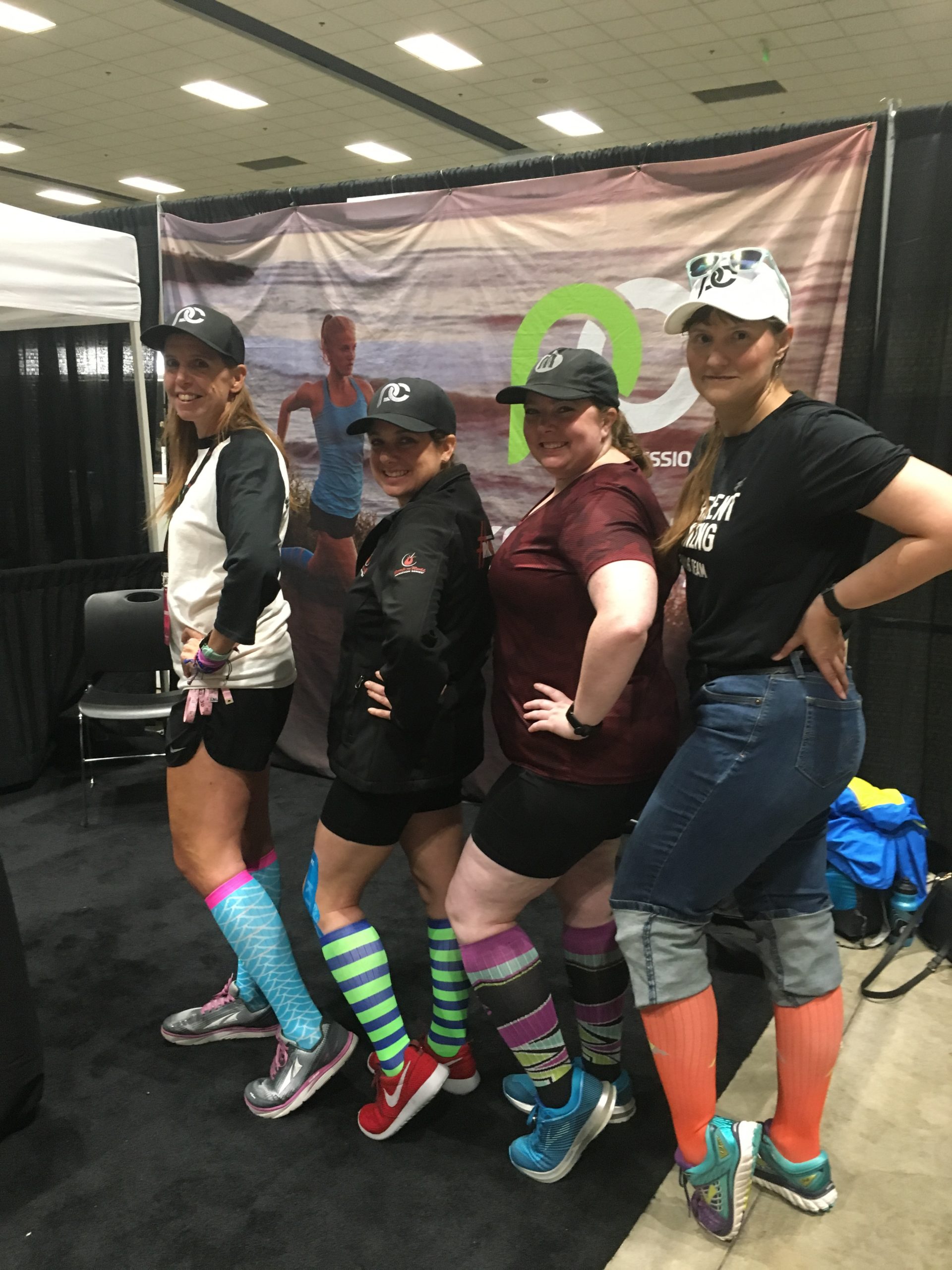
A Most Mysterious Race
Rock ‘n’ Roll Seattle is a bit of an enigma. I really want to like it, especially since it’s pretty clear Rock ‘n’ Roll isn’t welcome in Portland. (RIP Rock ‘n’ Roll Portland. I will miss the airport carpeting finish line.) And actually maybe running downtown isn’t welcome in Portland, if we’re being honest. It’s a destination event for many runners (some of whom spend the day before the race doing the typical tourist things like the bubblegum wall, aquarium, and Pike Place Market), and just another run weekend for those trying to hit the 15-race-mark for Rock ‘n’ Roll’s “Hall of Fame.” (That has become more elusive as the number of races in the United States has dwindled. No idea what they will do about 2020.) The only thing that seems to stay the same each year is the location of the Expo–and even that has gotten disappointingly smaller.
About That 5k
I haven’t run the 5k for the Remix medal since Rock ‘n’ Roll discontinued the shuttle bus service. The 5k is staged at the Museum of Flight, which is right at the southern end of Seattle, out by the old Boeing Field. It’s waaaaay too far to walk from the central downtown area, which is why there was originally a shuttle bus. (The shuttle cost extra–it wasn’t included in the price of the race, even though entry was already at a premium and priced well above the locally produced 5k events, of which there are many.) While I haven’t personally looked into it, friends tell me that navigating the otherwise excellent Seattle bus system to get down to the Museum of Flight in time for the start is difficult. On the other hand, taking a cab, Uber, or Lyft is expensive. So unless you’re committed or have a car, it’s a little inaccessible. The 5k is a fun shake-out, basically an out-and-back loop around the area, which has some decent shade and some historic planes outside. The Museum was open pre-race, which meant access to snacks, decent coffee, and–perhaps most important–toilets that flush.
The Magical Shrinking Expo
Every year the race’s expo is at Centurylink Field, in the exhibitor area. This is convenient in that it’s easy to get there by transit and has plenty of parking. Each year, the expo appears to be shrinking. In 2015 the expo had a robust representation of local races, including the Blooms to Brews (which the city of Woodland, WA stupidly refused to grant a permit for 2020). There were also numerous smaller businesses exhibiting race-related or theoretically race-applicable items. (I distinctly remember a booth with costume jewelry and hair clips from 2015 or 2016.) In 2019, only a few of the largest Seattle races had a booth, and the expo was less than half the size it was in 2015. I arrived about two hours before the end of the expo on Saturday, and some of the booths were already closed. That’s fine for me, but I feel bad for those who are running their first Big Race since I see a vibrant expo as part of the experience. Registration was still open–the race did not sell out–though I’m not sure who would pay $189 for a marathon given local race prices. In 2019 the Rock ‘n’ Roll/Brooks shop’s credit card machines were down (they were very apologetic and said it was an internet problem with the building, which I thought was ironic in a place bearing the name Centurylink, but then I managed to buy from Pro Compression and Tailwind using a credit card without any problems, so…).
The Ever-Changing Course
Seattle must be a difficult place to stage a race. The past few years have seen massive construction, including replacement and (still only partial!) removal of the viaduct, which the past years’ courses ran atop. I know that Portland is impossibly stingy with what and where they will allow running events, so I can only assume Seattle is the same, and that this explains why Rock ‘n’ Roll has changed the course substantially every year I have run it. The race has started or ended at the University of Washington and beneath the Space Needle; as a point-to-point course it also ended at the Centurylink Field parking lot twice during the years I have participated. While I personally thought it was clever to stage multiple miles of the 2019 race on the HOV freeway lanes (closed during the early Sunday morning hours), other runners I talked to HATED it.
I don’t have many complaints, other than where the eff were all the port potties this year?!? The lines at the first ones I passed had at least 40 people (yes, I counted), and the demand was so great that the individual port-potties set out for the bands to use also had a line of 30+. I get that it’s inconvenient to put porta-potties on the HOV lane of the freeway…but if they can do it for the bands–and set up stages besides–why not for the runners?? I waited until I could wait no longer, by which time I was off the freeway and into a neighborhood, and still ended up in a line of 20+ people and only 4-5 porta-potties. Even more annoying, there was NO SIGN or other indication that there were another 8-10 porta-potties just at the end of the block. Having stood still-ish for quite a long time (you know how sometimes nature calls and you can’t just send her to voice mail?) I was PISSED when I saw that line of porta-potties, with ZERO people waiting in line. I easily could have saved 10 minutes there. COME ON, for the love of all that is holy, surely an organization that puts on races knows better?!?
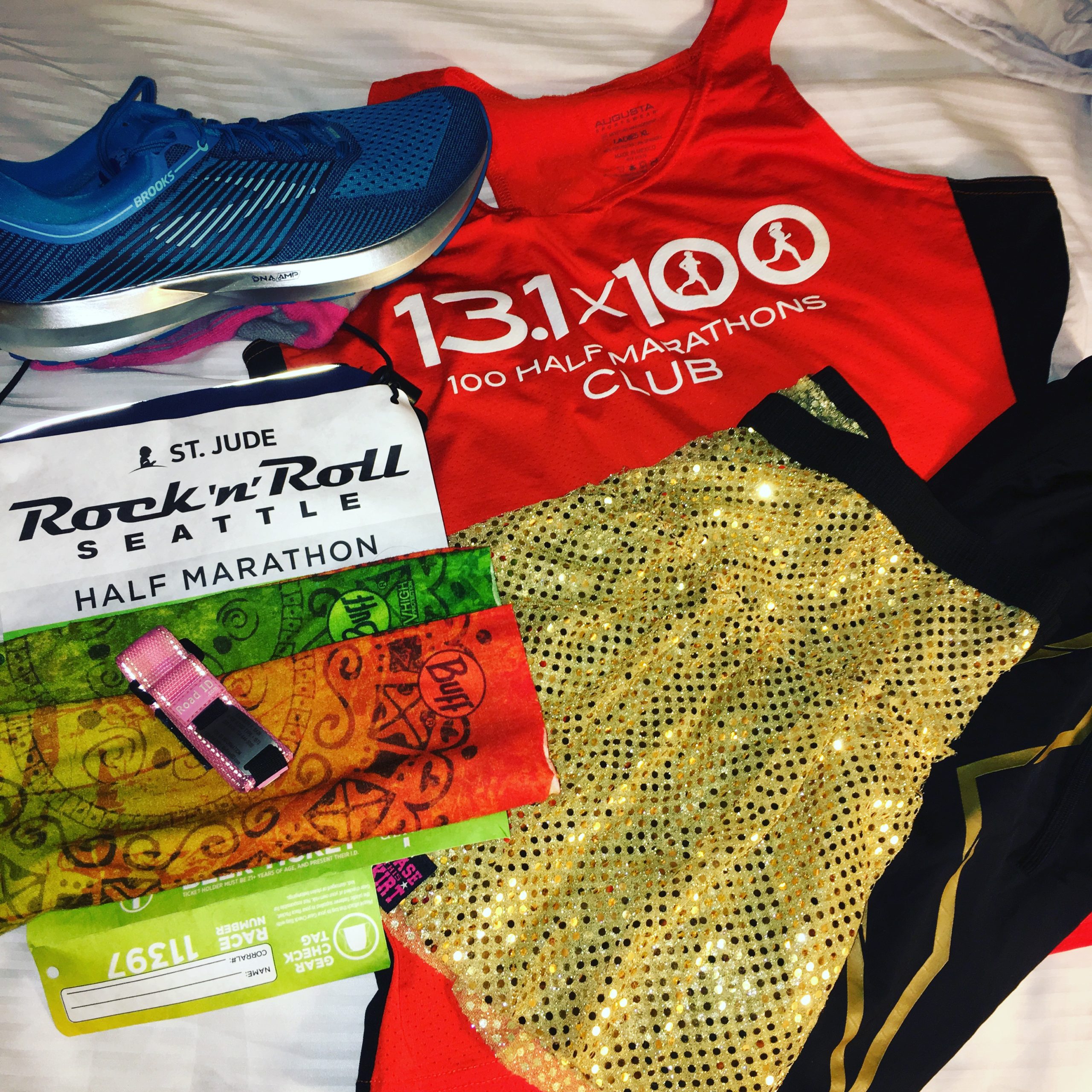
The 2019 course featured a gigantic climb up Queen Anne Hill towards the end. I did not appreciate this. (The climb was less challenging than the very steep uphill trudge of 2018, but still!) The views were lovely, but I’d much rather have had the super steep downhill at the very end as an uphill at the very beginning. One of the downsides of a constantly changing course is that the neighborhoods don’t develop any traditions. At the old Portland Marathon, for example, neighbors would picnic outside, with kids dressed up and banging drums or waving pompoms; at Rock ‘n’ Roll San Diego, several neighbors have “unofficial aid stations” with adult beverages and puppies. There were two girls with donuts along part of the course this year, but it’s not the same energy as I’ve experienced on courses that have been consistent for long enough for traditions to develop. While there were a few entertaining locals outside of the “Grey’s Anatomy” house, the race course will probably change again next year.
On-Course Amenities Delivered, Mostly
In 2018, Rock ‘n’ Roll promised music every mile, and more aid stations on the course. The “music every mile” never delivered, and even some of the mile-marker speakers (independently streaming music from I don’t know where) malfunctioned, alternating between music, static, and silence. Similarly, I could have used more music in 2019. At least the aid stations were well-stocked and had supplies when I passed them, but since I’ve determined that I prefer fuel other than the series’ sponsor’s gels and hydration (I was packing Tailwind) it didn’t affect my race. Since it IS an improvement over past years–especially for the “back of the packers” that Rock ‘n’ Roll claims to support, I’ll call it a win.
Let’s Talk VIP and Finish Line
The year Kamika made Seattle his 100th Rock ‘n’ Roll race, I had access to VIP. (If you saw a bunch of people with smiley-face pineapples pinned to them, that’s what that was about–Kamika is from Hawai’i.) That year, the course started at UW and ended at CenturyLink. Pre-race VIP was rather miserably cold, with a cold wind blowing off the field and through the entrance to the VIP brunch area (the concourse between the upper and lower decks, inside the stadium). While there were a dozen strategically placed gas tower heaters–the kind you see outdoors at restaurants and bars–NONE of them were in use. Instead, a few measly electric heaters were irregularly spaced around the area, heating only the ankles of those in the immediate (like 2 feet) area. Apparently the good folks at Ironman had not bothered to clear the gas powered heaters with the UW stadium management, who put the kibosh on their use in the stadium. (Perhaps Iroman shouldn’t have axed most of the Competitor Group’s VIP staff? Maybe it’s just me?) I was also very annoyed that the lines for the women’s bathroom at the VIP area pre-race were crazy long, while the men’s line only had 1-2 people in it at any time. At the beginning of the day, women were told they could ONLY use the ONE bathroom, but eventually we mutinied–there’s no logically reason why we were banned from the bathroom that was literally right across the hall, especially when the UW stadium was built in the era where bathrooms were built one-to-one. (In modern architecture for places of mass accommodation, there are more women’s bathrooms–or more stalls within them–than men’s rooms.) Both lines got bad enough that the women eventually took over the men’s room as well.
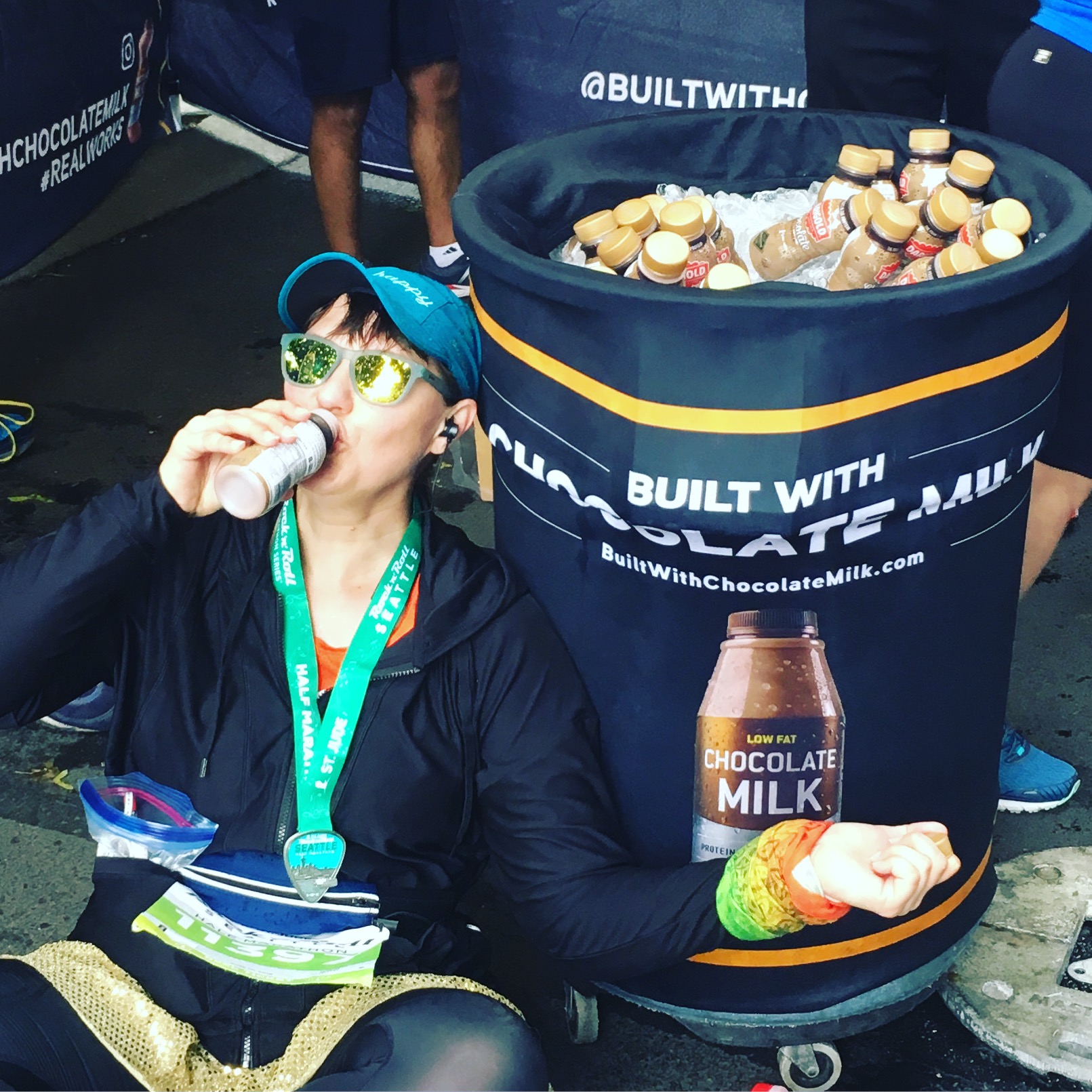
Post-race, at the same race, VIP at the Centurylink field was just okay. It had a good view of the band, but was (again) cold. I, pale runner who avoids the sun, was jockeying space to get some sunlight. The year I did not have VIP access (and the race ended at Centurylink field) was also really cold, and I remember seeing an ice cream booth and thinking it would be lovely and I’d buy some on any other day. (Turns out they only accepted cash anyway. Seriously.) That year, sponsor Alaska Airlines had a tweet-for-a-treat machine that was really fun–I still have the model plane with my race medals, and one of my friends who really needed it won a free round-trip airfare.
That said, I’m glad the finish line moved back to the Space Needle and surrounding park areas in 2018 and 2019. Overall, it is a much better area for bands, and it’s got much more welcoming room for dogs and families. Also critical, access to indoor potties pre-race! I did take the VIP route my very first year at Rock ‘n’ Roll Seattle–which had a start and end at the Space Needle area–and pre-race it was pretty great: a separate VIP gear truck, and a decent brunch spread in advance. (I have no idea what the post-race food looked like, as it was all gone when I finished that year.)
Sad Swag (whomp whomp)
Like other races in the series, race swag has declined. Last year, Rock ‘n’ Roll Seattle had one of the almost-generic guitar-pick medals. This year the design showed the Seattle skyline and a plane, but it was so generic as to inspire a “isn’t this the same medal as last year?” from a friend of mine for whom Rock ‘n’ Roll Seattle was her first (and now third) half marathon. Literally she’d only done three races, and thought the medal was a clone. Like Rock ‘n’ Roll San Francisco, the shirts are made of a cheap fabric that isn’t breathable; the actual graphic is decent, but the placement on the women’s shirts is awkward, and the graphic large enough to make the shirt stiff. I’m a bit surprised that series sponsor Brooks–a company that makes very nice, breathable athletic wear with quality fabrics–is okay with having their logo on the shirt. Like I said, the design is nice and I might use it in a shirt quilt or something, but there’s a zero chance I will wear it.
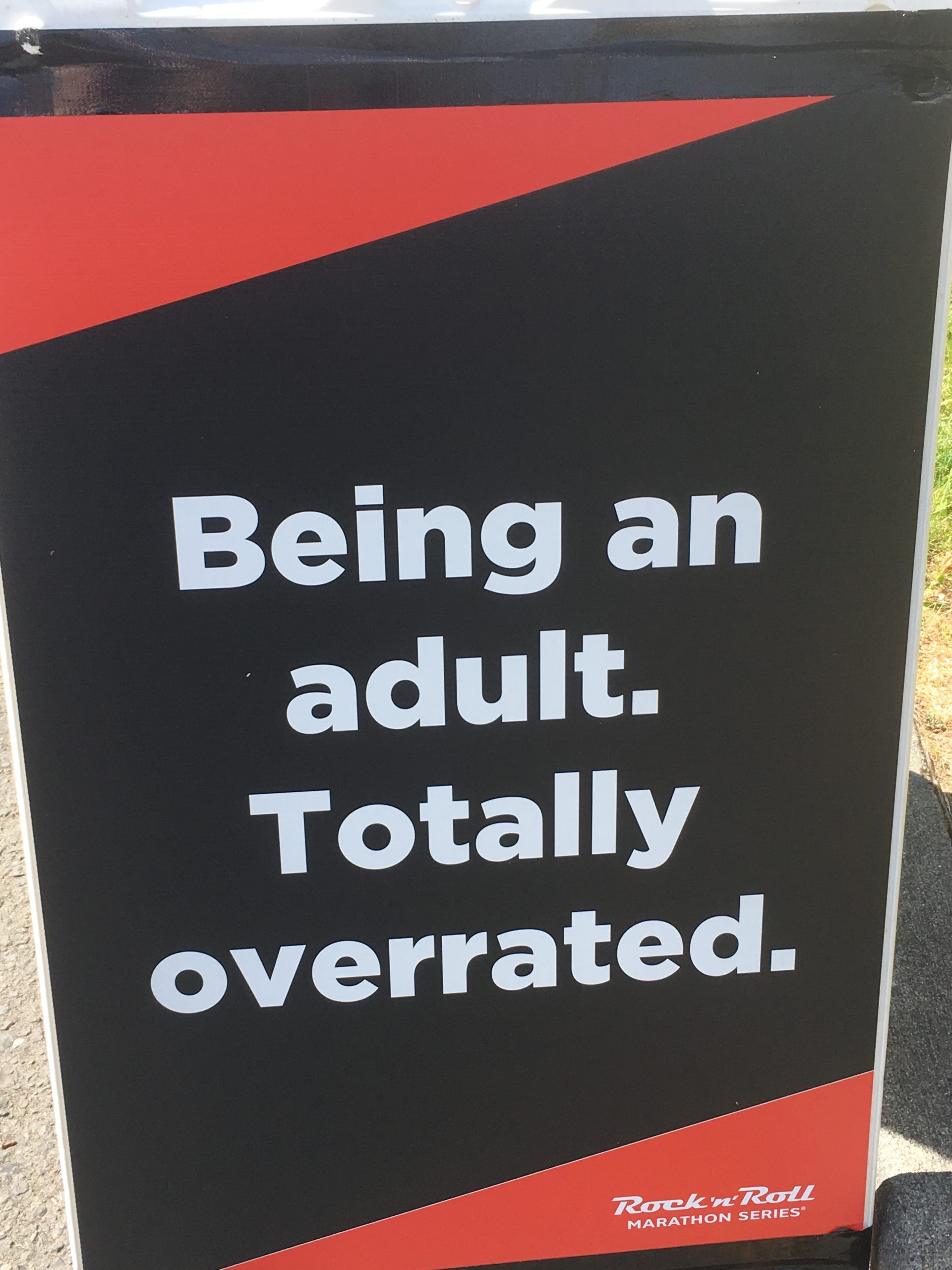
The Verdict?
Overall, I’d say Rock ‘n’ Roll Seattle is worth your while in a number of discrete circumstances:
- You are aiming for Hall of Fame and therefore need to hit every US race. (Buy the TourPass Unlimited.)
- You live nearby and won’t pay a ton of travel expenses, and have purchased the race during the pre-sale, the December sale, or the Running Day Sale.
- You know a bunch of your friends will be there, and you’re in for social events and shenanigans in addition to the race. (That’s why I run.)
If you’re going to run it don’t pay full price. (If you don’t have a TourPass, buy early, or at one of the sales. This is NOT a $189 race.) If you’re just looking for a race in Washington state, you’ve got plenty of other options–there’s a reason the Marathon Maniacs and Half Fanatics were founded here. If you want a race in Seattle, the Mercer Island Half is nice, and I’ve heard good things about the Seattle Marathon and races in nearby Tacoma.
Since I live in Portland, have a close friend who did Rock ‘n’ Roll Seattle as her first race (and remembers to make massage appointments at The Dream Clinic post-race), and have free crash space, I’ll likely be back in 2020. True confession: I was going to buy at the pre-sale in December…and then I was going to buy a three-pack…and then the virus started to shut down races…and so I still haven’t registered.
Have you ever run Rock ‘n ‘ Roll Seattle? What did you think?
